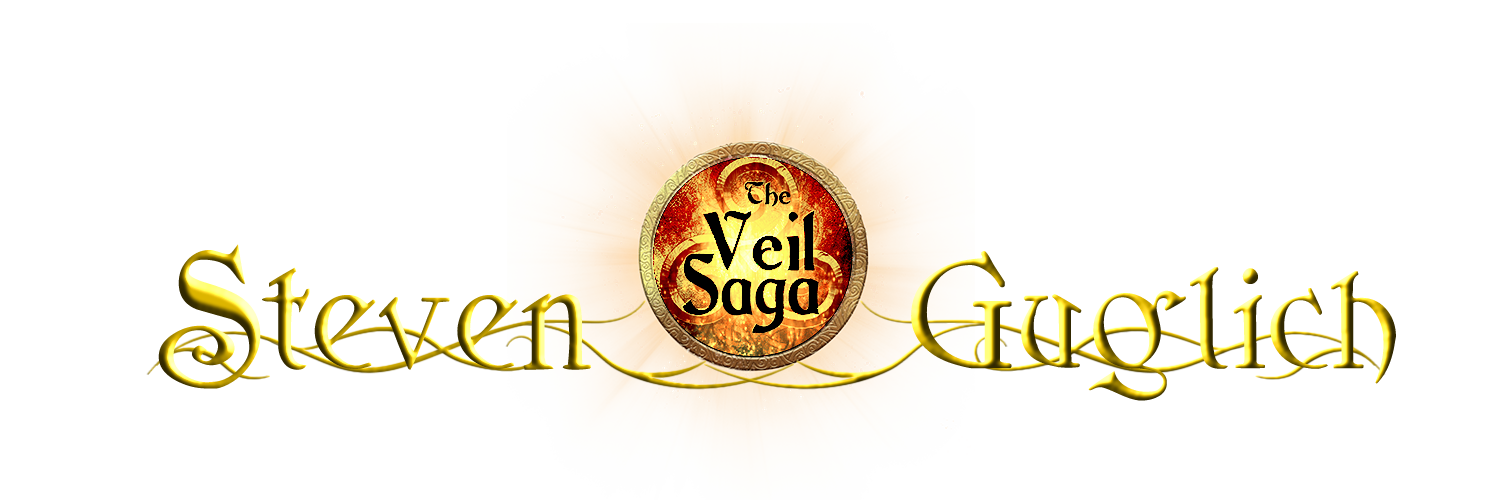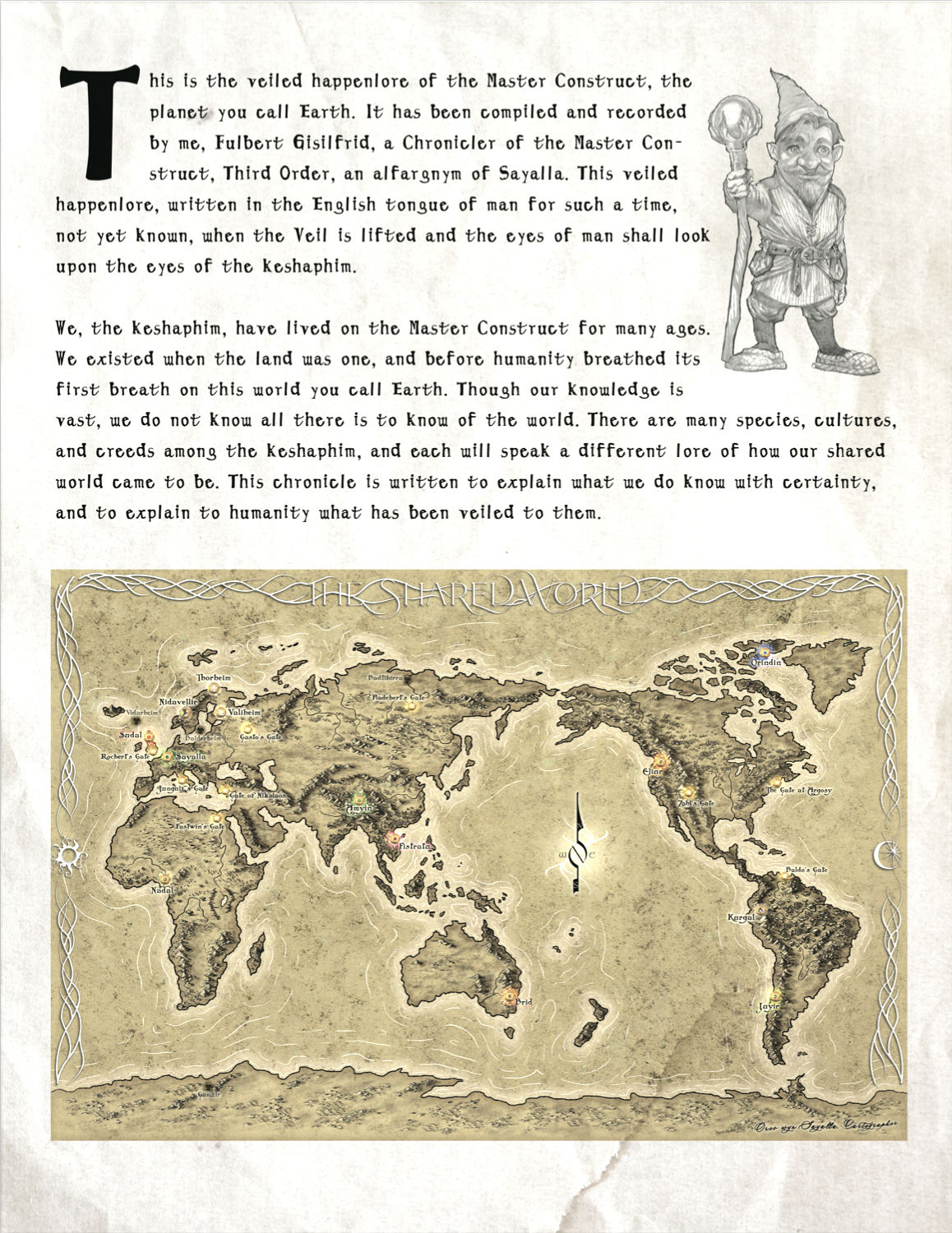A Dwarf By Any Other Name…
By Steven A. Guglich
Dwarves? Dwarfs? Dwerg? Dwergen? Dwarrow?
 One of the key elements in The Veil Saga is that the stories take place in our modern world. In the background are fantastic beings such as elves and dwarves, just to name a few. I wanted these races to feel real… to have depth and richness like a tapestry. So, in creating this fantastical series, I had to look at each of these races and explain their origins, explain why they did what they did, think what they think, and feel what they feel. The approach I took with this task was to dig deep into how cultures all over the world have stories of these same mythical races. Where did those stories come from and what do people actually think about these beings of lore and legend? I researched and polled friends on social media. I compiled the data into a database of information to sort through and work from, and that is how these keshaphim races were born into the world of The Veil Saga.
One of the key elements in The Veil Saga is that the stories take place in our modern world. In the background are fantastic beings such as elves and dwarves, just to name a few. I wanted these races to feel real… to have depth and richness like a tapestry. So, in creating this fantastical series, I had to look at each of these races and explain their origins, explain why they did what they did, think what they think, and feel what they feel. The approach I took with this task was to dig deep into how cultures all over the world have stories of these same mythical races. Where did those stories come from and what do people actually think about these beings of lore and legend? I researched and polled friends on social media. I compiled the data into a database of information to sort through and work from, and that is how these keshaphim races were born into the world of The Veil Saga.
 The first race we will look at are the stout folk commonly known as dwarves. In my research, I discovered that dwarves originated in Norse mythology. This was now a starting point for who my dwarves were and what they were all about. I asked myself, if the dwarves are based on the Old Norse myths, then did the Old Norse people call them dwarves? The short answer is, no. The word dwarf is really an English word. Digging deeper I followed the origin back over the centuries from dwarf, to dwarrow to dwerg, and dwergen, dverger all the way back to the original word in the Old Norse – dweorg!
The first race we will look at are the stout folk commonly known as dwarves. In my research, I discovered that dwarves originated in Norse mythology. This was now a starting point for who my dwarves were and what they were all about. I asked myself, if the dwarves are based on the Old Norse myths, then did the Old Norse people call them dwarves? The short answer is, no. The word dwarf is really an English word. Digging deeper I followed the origin back over the centuries from dwarf, to dwarrow to dwerg, and dwergen, dverger all the way back to the original word in the Old Norse – dweorg!
The Old Norse called the dwarves, dweorg. So, I settled on calling the stout folk who live in the mountains of Scandinavia, the same with the assumption that this is what they would have called themselves. I built their culture on Old Norse and Viking traditions and beliefs. And the dweorg became the race of beings that taught these beliefs to the Norse people thousands of years ago. Incidentally, everyone’s favorite Grandfather of Fantasy, J.R.R. Tolkien, also created his dwarves based on Norse mythology. However, he created his dwarves for another world (Middle Earth) and used the Norse beliefs as a basic framework. Interestingly enough, Tolkien, being a professor of English Language & Literature, admitted that he mistakenly misspelled the plural form of dwarf. He is the one who originated the spelling of “dwarves” rather than “dwarfs”. After he realized his mistake, he did not wish to go through his entire manuscript to change the spelling and decided to leave it at “dwarves.” This spelling has come to be the excepted spelling. Although, Walt Disney did correctly call his stout folk, dwarfs, in his Snow White story.
 In The Veil Saga, dweorg is singular and plural.
In The Veil Saga, dweorg is singular and plural.
As I started to create the dweorg I imagined what if they had, in a way, perfected what we know today of the Viking culture? Take away the plundering and pillaging and look carefully at the culture. Could there be a benevolence that could have evolved under the right conditions? In my research I came across a foundational concept in the Viking culture called the innangard and the utangard. I adapted it to fit my goal for the dweorg. Here is an excerpt from my World Building document on the dweorg:
Dweorg society can be summed up with two words, innangard and utangard. All that is dweorg, is innangard. The term has various uses, but it basically comes down to anything dweorg-related. Innangard can also be used to mean “within the mountain”, or “within the city”, or a place or a state of mind that is orderly, civilized, and law-abiding. If, on the other hand, it is chaotic and wild, it is considered utangard. The term utangard is also used to refer to anything not dweorg… anything “out of the mountain.”
Dweorg are not part of the Elven Covenant. They have their own rules and laws called var log, a phrase that means “our law” and shows how innangard and utangard are followed in their society. The var log is a psychological enclosure that separates the social from the antisocial, the innangard from the utangard. Anyone who commits a crime against an individual, the community, or the high king automatically becomes utangard. The punishment is a loss of all rights. A dweorg found to be utangard can even be killed on sight without any legal repercussions. If they are allowed to live, the utangard dweorg is banished and labeled skogarmaor, a “man of the forest”. In essence, they are labeled a human. The term skogarmaor is a negative label and shows the dweorgs’ disdain for humans. Those branded skogarmaor will often choose to flee as far from dweorg cities as possible and live out their lives in isolation and disgrace.
 The utangard is not always considered entirely destructive and negative. In fact, at times, dweorg will deliberately venture into the utangard (outside the mountain) for several reasons including; trade, hunting, diplomacy, and to prepare themselves for adulthood.
The utangard is not always considered entirely destructive and negative. In fact, at times, dweorg will deliberately venture into the utangard (outside the mountain) for several reasons including; trade, hunting, diplomacy, and to prepare themselves for adulthood.
Within the structure of the innangard and the utangard is the dweorg’s strong sense of family and community. The clan itself is considered another physical aspect of the innangard. It provides shelter, food, and security to everyone in the clan. The traditions that dweorg hold dear, and the virtues which guide them, are anchored in a rich culture that calls on familial, civic, and sacred ties to bind the dweorg together.
 This idea of the innangard and utangard was a real concept. In the history behind The Veil Saga, it was the dweorg who taught this concept to the Norse. However, the Vikings took it one way and the dweorg took it another. Due to man’s penchant for conquest, the dweorg began to seclude themselves within their mountains, leaving man to abandon the wise teachings of the dweorg and continue their own selfish destructive ways.
This idea of the innangard and utangard was a real concept. In the history behind The Veil Saga, it was the dweorg who taught this concept to the Norse. However, the Vikings took it one way and the dweorg took it another. Due to man’s penchant for conquest, the dweorg began to seclude themselves within their mountains, leaving man to abandon the wise teachings of the dweorg and continue their own selfish destructive ways.
In Piercing the Veil the first book in The Veil Saga, the dweorg play a significant role. There is much going on behind the scenes that involve the dweorg and who they are. The book opens with the dweorgs’ involvement in creating the Veil and ends with a startling event that changes everything for people on both sides of the Veil.
I’ve invited you on this journey. What are your thoughts? Do you have any suggestions? Do you have any questions about the dweorg?



